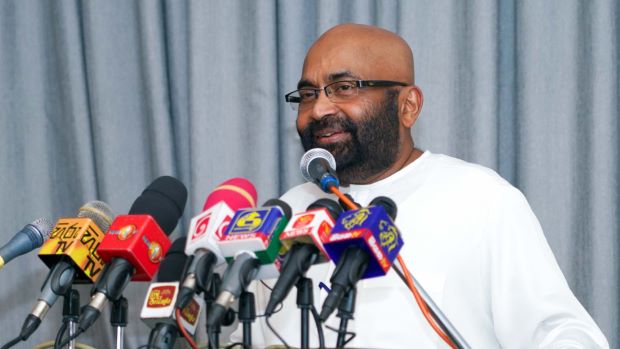Sri Lanka aims for ambitious 40% direct taxes by 2025
By Shihar Aneez
COLOMBO – Sri Lanka is targeting a 40% tax collection directly through income, wealth, and property taxes by 2025 up from the current 30% with expanding tax nets and legal actions against tax dodgers, State Finance Minister Ranjith Siyambalapitiya said.
Direct taxes are collected through individuals who can afford to pay taxes due to their higher income, along with asset and property ownership.
Since Sri Lanka faced an unprecedented economic crisis with sovereign debt default, both direct and indirect taxes have been increased even as President Ranil Wickremesinghe’s administration is contemplating new wealth, property and inheritance taxes from next year in line with the commitments it agreed with the International Monetary Fund (IMF).
Siyambalapitiya said the island nation’s state revenue has increased to “almost 13%” of the gross domestic product (GDP) now from 8.3% in 2022.
He said the country had 80% of the indirect taxes and 20% of the direct taxes when the government started the recovery process from the bottom of the economic crisis.
“This means 80% of the state revenue was paid by all the people. The same amount was paid by both the rich and the poor. Now this has changed to 70:30,” Siyambalapitiya told reporters at a media briefing in Colombo on Thursday (18).
He said the 20% direct tax had risen to 30% now and the government’s aim in 2025 was to change this to 40:60, which meant 40% from the people who can afford to pay taxes and 60% from indirect taxes. “Then we believe that we can implement a fair tax system,” he added.
A higher tax burden has already made the Wickremesinghe government unpopular among the people. Economists note the move has reduced people’s purchasing power and disposable income significantly.
However, Siyambalapitiya said the country has to sustain the current tax policies to stabilize the economy.
“To become a country with a stable economy, we need state revenue of 15% of the GDP. We got trapped because our revenue fell to 8.3% of the GDP,” he pointed out, explaining the government was now in the process of acting on those who hadn’t paid tax dues.
He said in 14 special categories for taxes, lawyers, doctors, tuition teachers who conduct mass classes, surveyors and engineers who work privately have now been asked to register for income tax, adding that the government was also in the process of taking legal action against tax evaders. “What we are trying to do through all these efforts is to increase the direct taxes, collect taxes from those who can afford to pay taxes,” he pointed out..
Siyambalapitiya said once the government reached the state revenue of 15% of the GDP with 40% direct taxes, it would likely reduce indirect taxes and increase the threshold level of PAYE (Pay As You Earn) tax from the current 100,000 rupees.
“We are aware that these need to be done. But we have to reach a certain economic level. Which government wants to burden unnecessary taxes on people?” he said, explaining that the first option after reaching better revenue, the government was ready (to cut taxes) but couldn’t give an exact date for that.
Siyambalapitiya acknowledged that it was difficult to increase the taxes to 13% (of the GDP) from 8.3% because it had to be done with the help of the public. However, he expressed confidence Sri Lanka could reach the tax revenue of 15% of GDP soon with the way things were progressing.
-economynext.com



Comments are closed, but trackbacks and pingbacks are open.